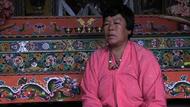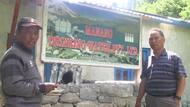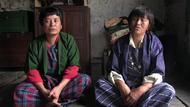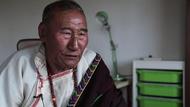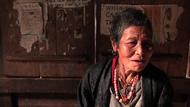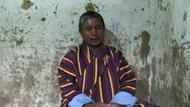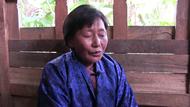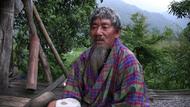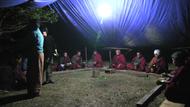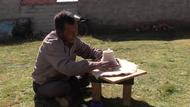Audio Overview
People of Kamdra Sali Chiwog describe Bjawa Kam Nyaru, a New Year celebration held on the 15th day of the 10th lunar month. People say it began with a local man who went on a business trip in India. On his way home, he noticed that the moon and a star were moving towards each other. He kept on watching the phenomenon until the night he got home. On the 15th day, it seemed the moon and the star had met in the sky and he considered it to be an auspicious sign. From that day forward, people of Dogar considered it an important day to celebrate.
- སངས་རྒྱས་ Sangayམི་སེར་འདི་ཚུ་ སྔོན་གོང་ལས་ཀྱི་ང་བཅས་ར་ཕམ་འདི་ཚུ་ ཏེ་ད་བཞུགས་པའི་སྐབས་འདི་ལུ་ ཏེ་ང་བཅས་ར་ལམ་ལུགས་སྲོལ་འདི་ཚུ་མ་བཏུབ་བཏུབ་སྦེ་ ང་བཅས་ར་གི་ལོ་བསྟར་གྱི་ ཏེ་ད་གསོལ་མཆོད་དེ་ཚུ་དྲངསམ་ད་ལུ་ ལོ་གསར་འདི་ཚུ་ལུ་ག་ཅི་ག་ཅི་འབད་དགོཔ་ཨིན་ནའི་སྐོར་ལས་ ད་ང་བཅས་ཀྱི་ཁ་ཐུག་ལས་ ད་མ་གཞི་འདི་ང་བཅས་ཀྱིས་རྒྱས་ཞིང་རྒྱསཔ་སྦེ་གནམ་མེད་ས་མེད་ཅིག་བཤད་པ་རྐྱབ་ནི་མེད་ མེད་དེ་ར་འབད་ས་ཅིག་རུང་ ང་བཅས་ར་ཕམ་དེ་ཚུ་གིས་ལེགས་ཤོམ་འབད་ ཏེ་ང་བཅས་ལུ་ ཏེ་ད་བསླབ་བྱ་དང་འདྲཝ་ཅིག་སྦེ་ཁོང་གིས་གསུངས་བཞགཔ་ད་ལུ་ ང་བཅས་ཁ་ཐུག་ལས་ཡང་དུམ་གྲ་ཅིག་ ཏེ་ད་ ད་རེས་ན་ལུ་ང་བཅས་ཀྱིས་གསལ་བཤད་ཆུང་ཀུ་ཅིག་ ང་བཅས་ཀྱིས་ཕུལ་ནི་ཨིན་ཟེར་ཞུ་ནི་ལགས།
- སངས་རྒྱས་ད་རེས་ང་བཅས་ཀྱི་རྡོ་དཀར་རྒེད༌འོག༌གི༌བྱག་འོག་སྐརམ༌ཉ༌རུ༌ཟེར༌ ཏེ་སླབ༌དགོ༌པའི༌རྒྱུ༌མཚན༌འདི་ ག༌ཅི༌ལས་བརྟེན་ཏེ་ཨིནམ་སྨོ་ཟེར༌བ༌ཅིན༌ གཙོ༌བོ༌ར༌ང་བཅས་ར་དུས༌དང༌ཕུ༌ལས༌ར་ ང༌བཅས༌རའི༌ཕམ༌བཟངམོ༌དེ༌ཚུ༌གིས༌ང་བཅས་ལུ་ ཏེ་ད་ཁོང་གི་ཞལ༌ལས༌ཞལ༌རྒྱུན༌དང༌སྙན༌ལས༌སྙན༌རྒྱུན༌སྦེ༌གསུངས༌དོ༌བཟུམ་སྦེ༌ ཏེ་ང་བཅས་ར་གི་ཟླཝ༌བཅུ༌པའི༌ཚེ༌བཅོ༌ལྔ༌ལུ༌ ང་བཅས་ར་ངོ་མ་འདི་རང་ བྱག་འོག་སྐརམ༌ཉ༌རུ༌ཟེར༌སླབ༌དགོ༌པའི་ཁུངས་དང་དགོས་པ་འདི༌ག་ཅི་སྨོ་ཟེར་བ་ཅིན།
- སངས་རྒྱས་ Sangayགཙོ༌བོ༌ར༌ང་བཅས་ར་ ཏེ་ལོ༌གཅིག༌ནང༌ལུ་ང་བཅས་ར༌གི་ཟླཝ༌འདི༌དང༌ང་བཅས་སྐརམ༌སྨིན༌དྲུག༌དེ༌ཚུ༌དཔེ༌བཞགཔ༌བཟུམ་ཅིག༌འབད་བ་ཅིན་ ང༌བཅས༌ར༌གཉེན༌དང༌འགྲོགས༌བཟུམ༌ཅིག༌སྦེ་ ཏེ་སྐརམ༌སྨིན༌དྲུག༌འདི༌མོ༌ ཟླཝ༌འདི༌ཏེ་ཕོ༌བཟུམ༌ཅིག༌སྦེ༌ ལོ༌གཅིག༌ལུ༌ཁོང་གཉིས་ཚེ༌བཅོ༌ལྔ༌གི༌ཕྱི༌རུ༌ཆུ་ཚོད་བརྒྱད༌དགུ༌དེ༌ཅིག༌ཁར༌ཁོང་གཉིས་ཀྱི་འཛོམས༌ནི་གི་དུས་སྟོན་འདི་ དེ༌ཁར༌ཨིན༌ཟེར༌སྤྱིར་བཏང་དེ༌སྦེ༌གསུངསམ༌ཨིན༌མས༌ལགས།
- སངས་རྒྱས་ Sangayཏེ༌འ༌ནཱི༌འབདཝ༌ལས༌བརྟེན༌ཏེ༌ང་བཅས་ཀྱི་ལོ་འདི༌ཡང་ ཏེ་དུས༌དང༌ཕུ༌ལས༌ར༌འ༌ནཱི་གུ༌བརྩིས༌ཏེ་འབད་ནི༌འདི༌གིས༌ང་བཅས་བྱག་འོག༌སྐརམ༌ཉ༌རུ༌ཟེར༌བརྩི༌དགོ༌མི༌རྒྱུ༌ མཚན༌འདི༌ དེ་སྦེ་ཨིན་ཟེར༌ཞུ༌ནི༌ཨིན༌ལགས། ཏེ་དེ་ནང་ དེ་ཁ་ལུ༌ཚེས་བཅོ་ལྔ་ལུ་འབད་དགོཔ་ག་ཅི་ག་ཅི་ཡོདཔ་སྨོ་ཟེར༌བ༌ཅིན༌ གཙོ་བོ་ར་གཅིག༌འདི་ དྲོ་པ་ཧ་སག་ལོང་སྟེ་གིས་སྦེ་ ང་བཅས་ར་ཁྱིམ་ནང་གི་གནསཔ་འདི་ཚུ་བཏང་ ལྷ་བསང་ཁྲུས་གསོལ་འབད་ ཁྱིམ་ཐོག་ཁར་དར་འདི་ཚུ་བཀལ་ ཏེ་དེ་ལས་ང་བཅས་ར་གི་གཡུས་ཁ་གི་ཡུལ་ལྷ་དེ་ཚུ་ག་ར་མཆོདཔ་ཨིན་ཟེར་ཞུ་ནི་ཨིན་ལགས།
- སངས་རྒྱས་ Sangayདཔེ་བཞག་པ་ཅིན་ ད་ཅི་ང་བཅས་གོང་ལས་ཕར་ ཁམས་གྲག་ལུ་ ང་བཅས་རྡོ་དཀར་རྒཔོ་གི་ ཏེ་གཟིམ་ཅུང་གི་སྦོ་ལོགས་ཁ་ལུ་ ཏེ་བཙན་གྱི་གནས་ཁང་ཅིག་ཡོད་ལགས། ད་འ་ནཱ་ལུ་ཡང་ཁོང་ར་ཕར་ གཡུས་ཁ་གི་གཡུས་ཚན་དེ་ནང་གི་བཙན་གྱི་གནས་ཁང་འདི་ཁོང་ར་གིས་ལོ་བསྟར་བཞིན་དུ་གསོལ་མཆོད་ཕུལ་འབད་བའི་གནས་སྐབས་ཅིག་ཨིན། འདི་ནང་ལུ་ཡང་དྲོ་པ་དང་པ་ར་ཕར་ལས་གསོལ་ཁ་འདི་མ་བཏུབ་བཏུབ་སྦེ་ཕུལ་ བླམ་ཆོ་གཔ་ཞུ་འབད་སྦེ་ ཕར་འབད་དགོ་ཟེར་ཞུ་ནི་ཨིན་ལགས།
- སངས་རྒྱས་ Sangayགཉིས་པ་སོངམ་ད་ ད་ལྟོ་ང་བཅས་ནཱ་གི་ ཏེ་བྱ་འདུ་བསྒང་ཟེར་ ང་བཅས་ནཱ་གི་བྱ་འདུ་བསྒང་གི་དགྲ་ལྷའི་གནས་ཁང་འདི་ དང་ཕུ་འབད་བ་ཅིན་འདི་ ནཱ་ལུ་ལྷ་ཁང་སྦེ་མིན་འདུག་ལགས། དང་ཕུ་ང་བཅས་ཨ་ནཱ་ལུ་ཡོད་མི་གི་མཆོད་རྟེན་ཆུང་ཀུ་ཅིག་ཡོད་མི་འདི་ ང་བཅས་ར་ཨ་ནཱ་ལུ་གཙོ་བོ་ར་དང་ཕུ་འབད་བ་ཅིན་ གནས་ཁང་གཅིག་ཨ་ནཱ་བརྩིཝ་ཨིན་པས་ ཏེ་ལོག་ ཏེ་དང་ཕུ་འབད་བ་ཅིན་ཨ་ནཱ་ལུ་དམག་རྐྱབ་རྐྱབ་ཨིན་མས་ལགས། ལོ་རེ་ནང་ལུ་གླང་རེ་རེ་བསད་ནི་འདུག་ལགས་ མར་གསད་འབད་དགོཔ་ཨིན་མས་ལགས། ཏེ་འ་ནཱི་འབདཝ་ད་ལུ་ སྐྱབས་རྗེ་ཉི་ཟེར་སྤྲུལ་སྐུ་ཞིང་གཤེགས་མཆོག་གིས་འབད་ ང་བཅས་ནཱ་ཞུ་འབད་སྦེ་ ད་འ་ནཱི་ཚུ་ཡང་དམར་མཆོད་འདི་རྐྱབ་མ་དགོཔ་སྦེ་ རྗེ་གིས་བཀའ་གནང་ [བཀག་ཆ་འབད་ཚར་བའི་ཤུལ་ལས་་་་་་་?]
- སངས་རྒྱས་ Sangayཏེ་ཟླཝ་བཅུ་པའི་ཚེས་བཅོ་ལྔ་གི་ཚེ་ལུ་ མི་དེ་ཚུ་ག་ར་འཛོམས་སྦེ་ འ་ནཱ་ལུ་ང་བཅས་ར་མི་རེ་རེ་གིས་ ཚོགས་ ཇ་ཕུད་ ཆང་ཕུད་འདི་ཚུ་ག་ར་འབག་འོང་ཞིན་ན་ ང་བཅས་ར་བླམ་ཆོ་གཔ་ཚུ་ཡང་ཞུ་འབད་སྦེ་ འ་ནཱ་མ་བཏུབ་བཏུབ་སྦེ་ ང་བཅས་ར་གི་དགྲ་ལྷ་གནས་ཁང་འདི་ནང་ལུ་ ང་བཅས་ག་ར་གི་ཁ་ཐུག་ལས་ ང་བཅས་ར་མདའ་ཅིག་རྐྱབ་པར་འགྱོ་སྟེ་འབད་ས་ཅིག་རུང་ རྩེདམོ་ག་ཅི་ར་རྩེ་བ་འགྱོ་སྟེ་འབད་ས་ཅིག་རུང་ དོན་དག་སྦོམ་ཅིག་རྐྱབ་པར་འགྱོ་སྟེ་འབད་ས་ཅིག་རུང་ ང་བཅས་གཞུང་གི་ཁ་ཐུག་ལས་འབད་ ད་དམག་ལུ་རྐྱབ་པར་འགྱོ་ནི་འབད་ས་ཅིག་རུང་ དམག་ལུ་འགྱོན་ན་དམག་དཔོན་ ཚོང་ལུ་འགྱོན་ཚོང་དཔོན་ཟེར་ ང་བཅས་ཀྱི་དགྲ་ལྷ་འདི་ དཔེ་བཟུམ་ཅིག་འབད་བ་ཅིན་ ང་བཅས་ཤར་གྱི་ར་བྲགཔ་བཟུམ་ཅིག་ཨིན་ལགས།
- སངས་རྒྱས་ Sangayཏེ་འ་ནཱི་བཟུམ་སྦེ་ ག་ཏེ་འགྱོ་སྟེ་འབད་རུང་ ང་བཅས་ར་དྲོ་པ་ནཱ་གི་ སྔོན་མ་ནཱ་ལྷ་ཁང་མེད་ལགས། མཆོད་རྟེན་གདོང་ཁར་འོང་ཚོགས་ཅིག་ཕུལ་ སྙན་དར་ཅིག་ཕུལ་སྦེ་འགྱོཝ་ད་ལུ་ ང་བཅས་ག་ར་སྐེད་སིང་སིང་སྦེ་འགྱོཝ་བའི་ནམ་དུས་དེ་ལུ་ ཏེ་དོན་དག་ཡང་བསྒྲུབ་ཚུགསཔ་ཟེར་ཞུ་ནི་ཨིན་ལགས།
- སངས་རྒྱས་ད་འ་ནཱི་འབད་ནི་འདི་གིས་ ད་ད་རིས་དུས་ཅི་ང་བཅས་ར་གི་ རྡོ་དཀར་རྒེད་འོག་གི་ང་བཅས་རྒཔོ་ལྷབ་ཚེ་རིང་གིས་ རྒཔོ་གི་ཁྲི་ཐོག་ལུ་སྡོད་ཚར་བའི་ཉིམ་ལས་ ཏེ་ང་བཅས་ར་ནཱ་ལྷ་ཁང་འདི་མ་བཏུབ་བཏུབ་སྦེ་གནང་ གནང་དགོ་པའི་རྒྱུ་མཚན་འདི་ཡང་ང་བཅས་ར་འདེམས་ཁོངས་གི་མ་དངུལ་འདུག ད་དྲག་ཤོས་བཙན་སྐྱོགས་རྡོ་རྗེ་གིས་འབད་ མ་དངུལ་མ་བཏུབ་བཏུབ་སྦེ་གནང་སྟེ་གིས་འབད་ ཏེ་དེ་ལས་ང་བཅས་རྒེད་འོག་ཁ་ཐུག་ལས་ཡང་རྒྱབ་སྐྱོར་མཛད།
- སངས་རྒྱས་ Sangayང་བཅས་མི་སེར་ཁ་ཐུག་ལས་འབད་ གཞུང་གི་ཁག་ཐུག་ལས་ རྗོང་ཁག་ཁ་ཐུག་ལས་ ག་ར་ལེགས་ཤོམ་སྦེ་རྒྱབ་སྐྱོར་མཛད་ད་ཞིནམ་ལས་ ང་བཅས་ལྷ་ཁང་འདི་ལེགས་ཤོམ་སྦེ་བསྒྲུབས་འབད་སྦེ་ ཏེ་དུས་ཅི་ང་བཅས་ཟླཝ་བཅུ་པའི་ཚེས་བཅོ་ལྔ་ལུ་ ཏེ་ཨ་རྟག་འབད་བ་ཅིན་ ང་བཅས་སྤང་ནང་འབད་བཏང་དགོ་ལགས་ཆོས་སྲུང་འདི་ཚུ། ད་དུས་ཅི་ལས་ང་བཅས་ལྷ་ཁང་འདི་བསྒྲུབས་སྦེ་ཞིནམ་ལས་ ང་བཅས་ལྷ་ཁང་ནང་མ་བཏུབ་བཏུབ་འབད་སྦེ་ ཏེ་ང་བཅས་ར་ག་ར་ཁ་ཐུག་ལས་ ལྷ་ཁང་འདི་ལུ་གནམ་མེད་ས་མེད་ཡིད་ཆེས་དང་ངལ་རང་ཡོད་ཟེར་ཞུ་ནི་ཨིན། ་་་་་་་་་་་
- སངས་རྒྱས་ང་བཅས་མི་སེར་འདི་ཚུ་ཡང་ སྟབས་བདེ་ཏོག་ཏོ་ཡར་སོ་ཡི་ཟེར་ཞུ་ནི་ལགས། ཏེ་འ་ནཱི་འབདཝ་ལས་བརྟེན་ཏེ་གི་སྦེ་ ད་གཙོ་བོ་ར་ང་བཅས་ར་ ད་འ་ནཱི་ཆོ་གུ་འདི་གྲོལ་སྦེ་ཚར་ཞིནམ་ད་ལས་ དེ་གི་ཤུལ་ལས་ལས་རིམ་ག་ཅི་ཡོདཔ་སྨོ་ཟེར་བ་ཅིན་ ད་དེ་ལས་ང་བཅས་ག་ར་རང་རང་སོ་སོའི་ཁྱིམ་ནང་ཡར་ཉོ་འོང་ལགས། ང་བཅས་རང་རང་སོ་སོའི་ཁྱིམ་ནང་འགྱོཝ་ཅིག་ ད་ཁྱིམ་ནང་ལྷོདཔ་ཅིག་ དེ་ལས་ ནང་ན་ཨམ་འདི་གིས་ལྟོ་ཆང་གི་ཅ་ལ་བསྒྲིགས་ ཡར་ཁྱིམ་ནང་བཟའ་དཔོན་འདི་གིས་ཕྱི་རུ་གི་ཟླཝ་ཚོགས་དྲངས་ནི་ཟེར་ ཏེ་འ་ནཱི་ཟླཝ་ཚོགས་དྲངས་ནི་དུས་ཚོད་འདི་ཁར་ལྷོདཔ་ད་ལུ་ དུས་ཚོད་འདི་ག་དེ་ཅིག་ལུ་ཨིནམ་སྨོ་ཟེར་བ་ཅིན།
- སངས་རྒྱས་ Sangayདཔེར་ན་ ང་བཅས་ནཱ་ལས་བལྟ་བ་ཅིན་ རྟེན་འབྲེལ་ལ་ཟེར་མི་འདི་ཁ་ལུ་ རྟེན་འབྲེལ་ལ་ལས་ཚུར་ ཟླཝ་འདི་མ་ལས་ཡར་སྦེ་ ཏེ་རིམ་པ་རིམ་པ་འབད་འཐོན་འོང་ལགས། ཁོ་ཕར་ལས་རིམ་པ་འབད་ཤརཝ་ཅིག་ ཏེ་ང་བཅས་ར་གི་ཕར་ཟླཝ་ཞལ་མཇལ་ས་འདི་གི་ ཏེ་ཕར་ཁྱིམ་སྒོ་ཁར་འབད་བ་ཅིན་ཁྱིམ་སྒོ་ཁར་ ཡང་ཅིན་མཆོད་བཤམ་ནང་ལས་འབད་ ཁོ་ཟླཝ་འདི་ག་ཞལ་མཇལ་ས་གདོང་ཁ་ལུ་ཁེབས་རྐྱབ ཚོགས་འདི་ཚུ་མ་བཏུབ་བཏུབ་འབད་ཕུལ་ དེ་ལས་ཆང་ཕུད་ ཇ་ཕུད་ ག་ཅི་འབད་དེ་འབད་རུང་ ང་བཅས་ར་འ་ནཱ་ལུ་ཚོགས་འདི་ མ་བཏུབ་བཏུབ་འབད་ཕུལ་ སྨོན་ལམ་འདི་ཡང་ལེགས་ཤོམ་འབད་བཏབ།
- སངས་རྒྱས་ Sangayང་བཅས་ར་སྨོན་ལམ་འདི་ག་ཅི་བཏབ་དགོཔ་སྨོ་ཟེར་བ་ཅིན་ གཙོ་བོ་གཅིག་འདི་ ང་བཅས་འབྲུག་རྒྱལ་ཁབ་འདི་ནང་ལུ་ དགའ་སྐྱིད་ཕུན་སུམ་ཚོགས་ཏོག་ཏོ་ སྐྱིད་ཏོག་ཏོ་སྡོད་ནི་གི་སྨོན་ལམ་ཅིག་ཨིན་ལགས། གཉིས་པ་ལུ་ང་བཅས་རའི་གཡུས་སྒོ་འདི་ནང་ལུ་ནཝ་ཚཝ་རྐྱེན་བར་ཆད་མ་འབྱུངམ་ཅིག་ གསུམ་པ་ལུ་ང་བཅས་ལོ་ཕྱུགས་རྟག་ཏུ་ལེགས་ ཆར་ཆུ་དུས་སུ་འབབ་ཟེར་ ང་བཅས་འ་ནཱི་ཚུ་ག་ར་ ཏེ་ང་བཅས་ར་ཁག་ཐུག་ལས་ ད་ཤེས་མི་གིས་ཡར་སྦེ་བཏབ་ མ་ཤེས་མི་གིས་མར་སྦེ་བཏབ་འདི་གིས་སྦེ་ ཟླཝ་འདི་ཚོགས་དྲངསམ་ད་ལུ་ཡང་ ཏེ་འ་ནཱི་ལུ་ང་བཅས་ཟླཝ་འདི་ལུ་ ང་བཅས་ཚོགས་འདི་ཡང་མ་བཏུབ་བཏུབ་འབད་དྲངས་དོ་ལགས།
- སངས་རྒྱས་ Sangayའ་ནཱི་དྲངས་སྦེ་ཚར་ཞིམ་ལས་ དང་པ་ཚོགས་དྲངས་ དེ་ལས་ཇ་མཆོད་ ཏེ་ང་བཅས་བླམ་ཆོསཔ་ཡོད་མི་ཚུ་གིས་ཇ་མཆོད་བཏངམ་ཨིན་ལགས། མེད་མི་ཚུ་གིཤ་ཇ་ཕུད་ཅིག་བཀང་ ཆང་ཕུད་གཏོར་སྦེ་ཚརཝ་ཅིག་ དང་པ་ཚོགས་འདི་བཅད་ཕར་ཕུལ་ འདི་གི་ཤུལ་མ་ལས་འདིའི་ལྷགན་མཇུག་ཕར་ལས་ཚུར་གྱི་ ཏེ་ཕུད་འདི་ཞུ་སྦེ་ཚུར་ལྷོད་སྦེ་ཞིནམ་ལས་ ཏེ་ང་བཅས་ཁྱིམ་ནང་བཟའ་ཚང་ག་ར་འབོ་ཟ་ ཏེ་འ་ནཱི་ཤུལ་ལས་ང་བཅས་ར་གི་ཁྱིམ་ནང་གི་བཟའ་ཚང་ག་ར་ལྟོ་ཟ་དགོ་ལགས། འ་ནཱི་ལྟོ༌འདི༌ཟ༌ཚརཝ༌ཅིག དེ་ལས་ཟླཝ༌འདི༌ལ༌ལས༌ཐོན༌ཚརཝ་ཅིག ང་བཅས་ཚོགས༌ཕུལ་ག་ར་འབད་ཚརཝ༌ཅིག༌ དེ་ལས་ང༌བཅས༌ར་གི་ཉ༌རུ༌ཤ༌རུ༌ཟེར༌ ང༌བཅས༌ར་ལོ༌ལེགས༌ཅིག༌སྒྱུར༌ནི༌ཡོད༌ལགས།
- སངས་རྒྱས་ Sangayད་འ༌ནི༌བསྒང༌ལས༌ ཏེ་དེ་བསྒང་འབད་བ་ཅིན་ ཏེ་ལོ༌ཁལ༌གཅིག༌ལྔ༌སྦེ༌སྡོད༌པའི༌བསྒང༌ ང་བཅས་ག་ར་གཞོན༌སྐྱེ༌འདི་ཚུ༌ཁ་བསྡོམས་ ལོ༌ལེགས༌བགྱང་པར་འགྱོཝ༌ཨིན༌ལགས། ཏེ༌འ༌ནཱི༌ལོ༌ལེགས༌བསྒྱུར༌བ༌འགྱོ༌བའི༌བསྒང༌ལས་ ཏེ་ང་བཅས་ར་ ཏེ་ཁྱིམ་ལས་འགྱོ་བའི་བསྒང་ལས་ཕོ༌རྒྱ༌གསུམ༌གསུམ་ བཞི་བཞི་ ལྔ༌ལྔ༌ དྲུག༌དྲུག༌ ཁ༌བསྡོམས༌འགྱོ༌བའི༌བསྒང༌ལས༌ ཏེ་ལེགས༌པའི༌ལེགས༌བཤད༌འདི༌མ༌བཏུབ༌བཏུབ༌འབད༌རྐྱབ༌འགྱོ་ འདི༌གི༌ཁྱིམ༌ནང༌འགྱོ༌ འདི་ནང་ལས་རོགས་དང༌ཕུ༌འབད༌བ༌ཅིན༌ ཏེ་ད་ང་བཅས་ཤེས་ཏེ་ར་ ན༌ཧིང༌ཚུན༌ཚོད༌རོགས་ ཏེ་ལྟོ༌བང༌ཅུང༌གང༌དང༌སྤགས༌འབདན་སྤགས༌གཅིག༌ ཏེ་འ་ནཱི་ཏེ་ང༌བཅས༌ལོ༌ལེགས༌བསྒྱུར༌མི༌ཚུ༌ལུ༌འ༌ནཱི་སྦེ་ཨིན༌མས༌ལགས།After moving out from out door, we divide ourselves into the groups of three, four, five and six men and then go to different houses, singing the song of wel-being. In the olden days and till last year as I remember, bowl full of rice with meat is offered to us for singing Lo-lay.
- སངས་རྒྱས་ Sangayཏེ་ཁྱིམ༌ནང༌འབོ༌སྦེ༌ཇ༌འཐུང༌མི༌ལུ༌ཇ༌ ཆང༌འཐུང༌མི༌ལུ་ཆང༌ ད་འ་ནཱི་ཚུ་མ༌བཏུབ༌བཏུབ༌འབད༌གནང༌འབད་སྦེ་ ཏེ་ཞབས༌ཁྲ༌ཤེས༌མི༌གིས༌ཞབས༌ཁྲ་ལེའུ༌ཐེངས༌གསུམ༌གསུམ༌ བཞི༌བཞི༌དེ་རེ༌རྐྱབ༌འབད་སྦེ།
- སངས་རྒྱས་ Sangayཏེ་ང་བཅས་ར་མར་དཔེ༌བཞག༌པ༌ཅིན༌ སི༌ལི༌མགོན༌པ༌ལས༌འགོ་བཙུགས་པའི་འཕྲོ་ལས་ ཏེ་ད་ཡར་དར་ལ་ལས་མར་རྐྱབ་ མར༌ཁམ་གྲག་མར་བཀྲིས༌སྒང༌ཚུན༌ཚོད༌འོང༌ དེ༌བསྒང༌ང༌བཅས༌འབདཝ༌ད༌ཨ་མར་རྗོང༌ཁག༌ ཏེ་ད་ང་བཅས་མར་ཨམ༌འཆི༌མེད༌པདམོ༌ཟེར༌ ཨམ་གཅིག་ཡོད་ལགས་ འ་ནཱི་ཁྱིམ༌རྙིངམ༌འདི་ནང་ལུ་ལྷོདཔ་ད་ འ་ནཱ་ལས་ཏེ་རོགས་ ཞབས༌ཁྲ་བཀྲིས༌ཕབ༌ ཉིམ༌ཕོག༌པའི༌བསྒང༌ལས༌ ཏེ་ཞབས༌ཁྲ་བཀྲིས༌ཕབ༌ འ་ནཱི་སྦེ༌འགྱོཝ༌ཨིན༌ལགས།
- སངས་རྒྱས་ Sangayཏེ་འ༌ནཱི་འབད༌ནི༌འདི༌གིས༌ ཏེ་ད༌ལྟོ༌ཚུན་ཚོད་ཡང༌ ཏེ་ང༌བཅས༌ར༌ག༌ར༌ མ༌ཉམས༌གོང༌འཕེལ༌དང༌ཉམས༌པ༌སྲུང༌སྐྱོབ༌འདི༌ ད༌ལྟོ༌ཚུན་ཚོད་ག་ར་མ༌ཉམས༌པ༌རང༌འབད་དེ་ཡོད༌ཟེར༌ཞུ༌ནི།། །།
 Loading ...
Loading ... 